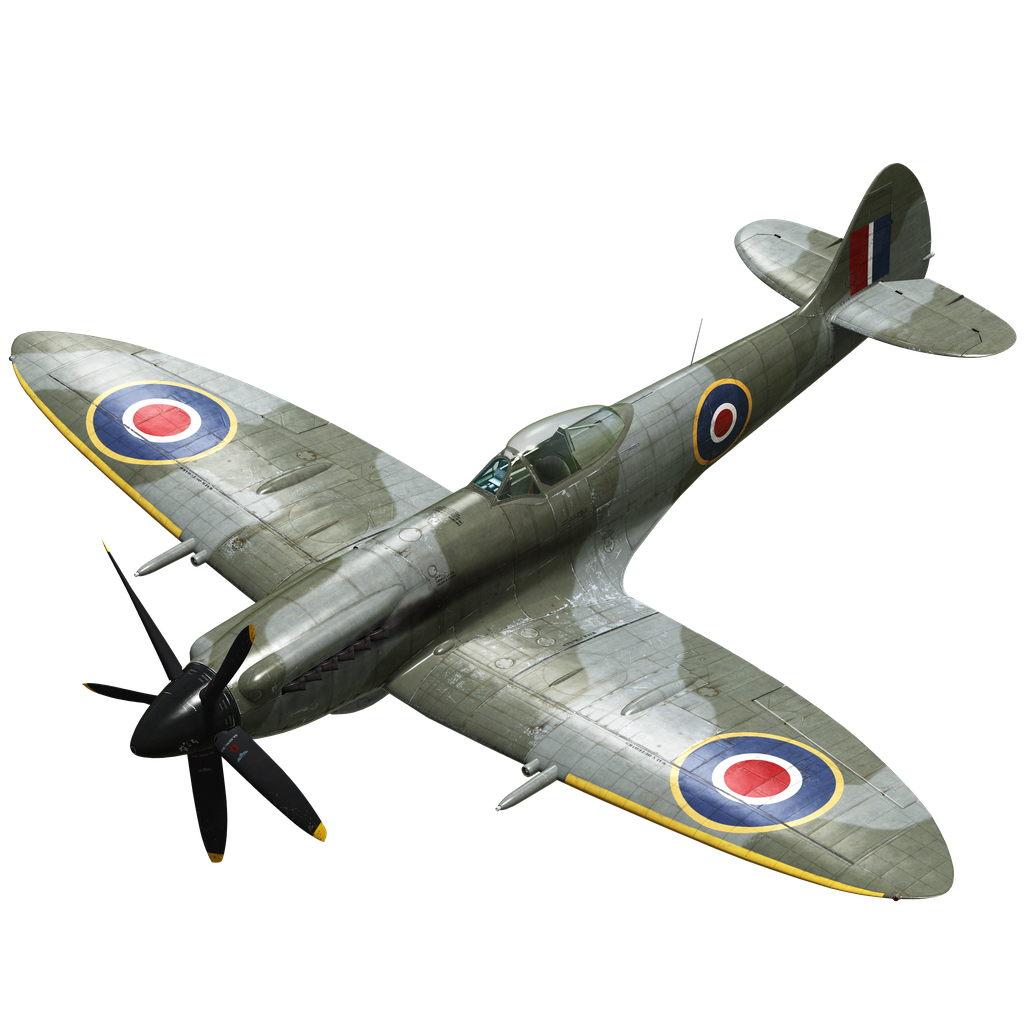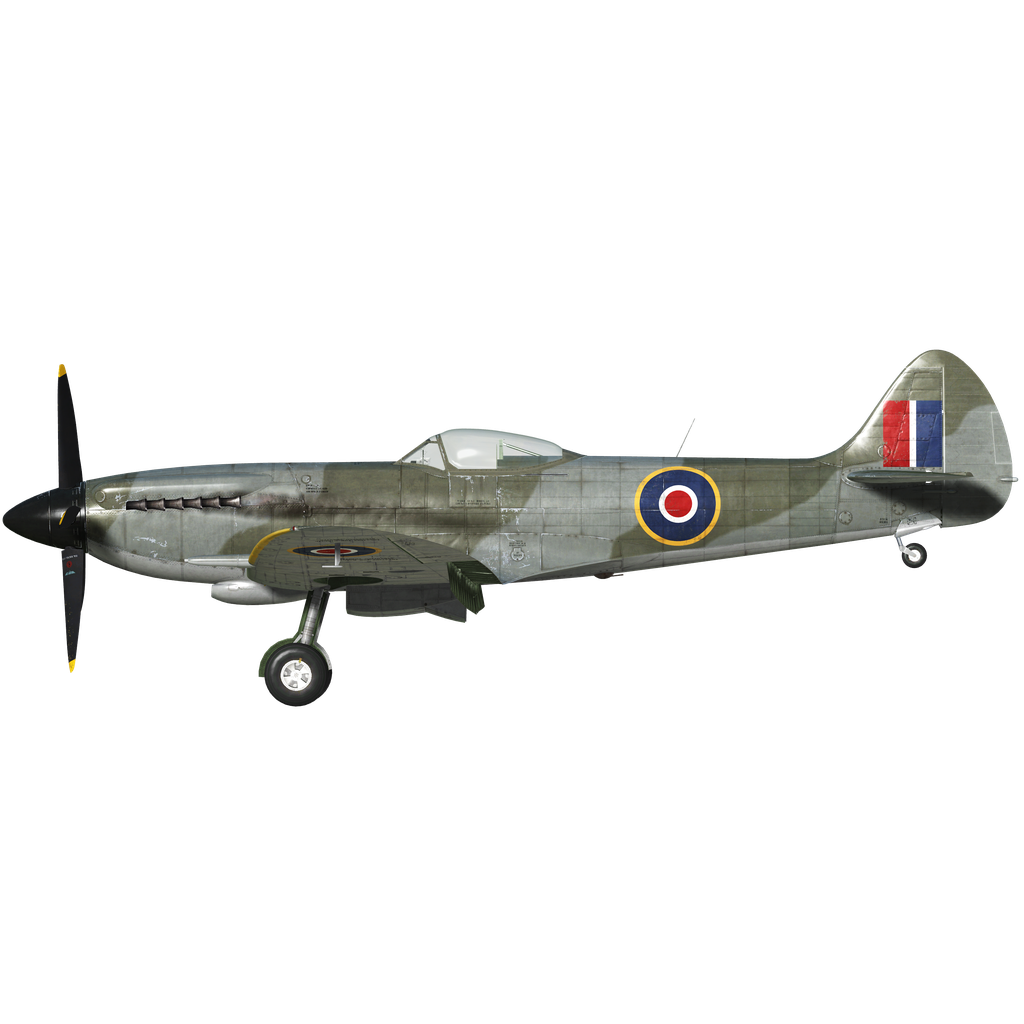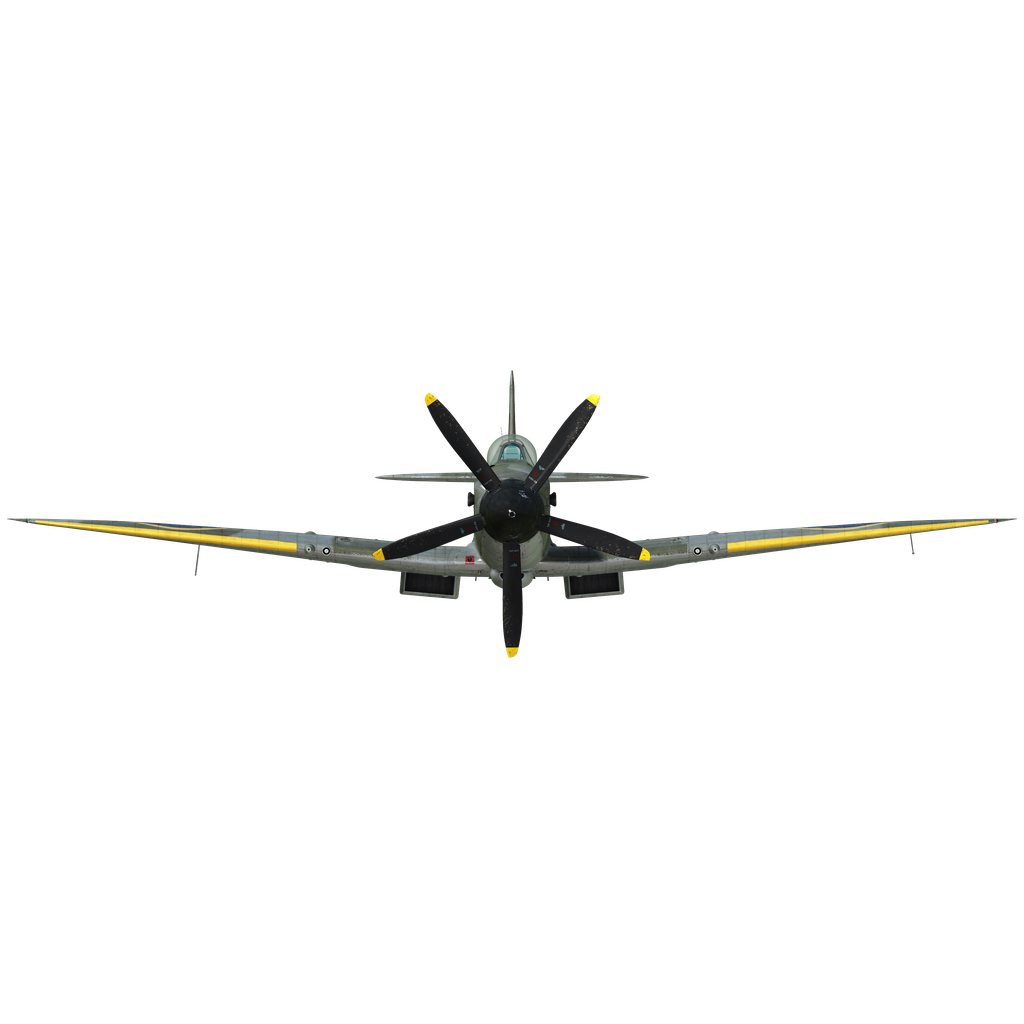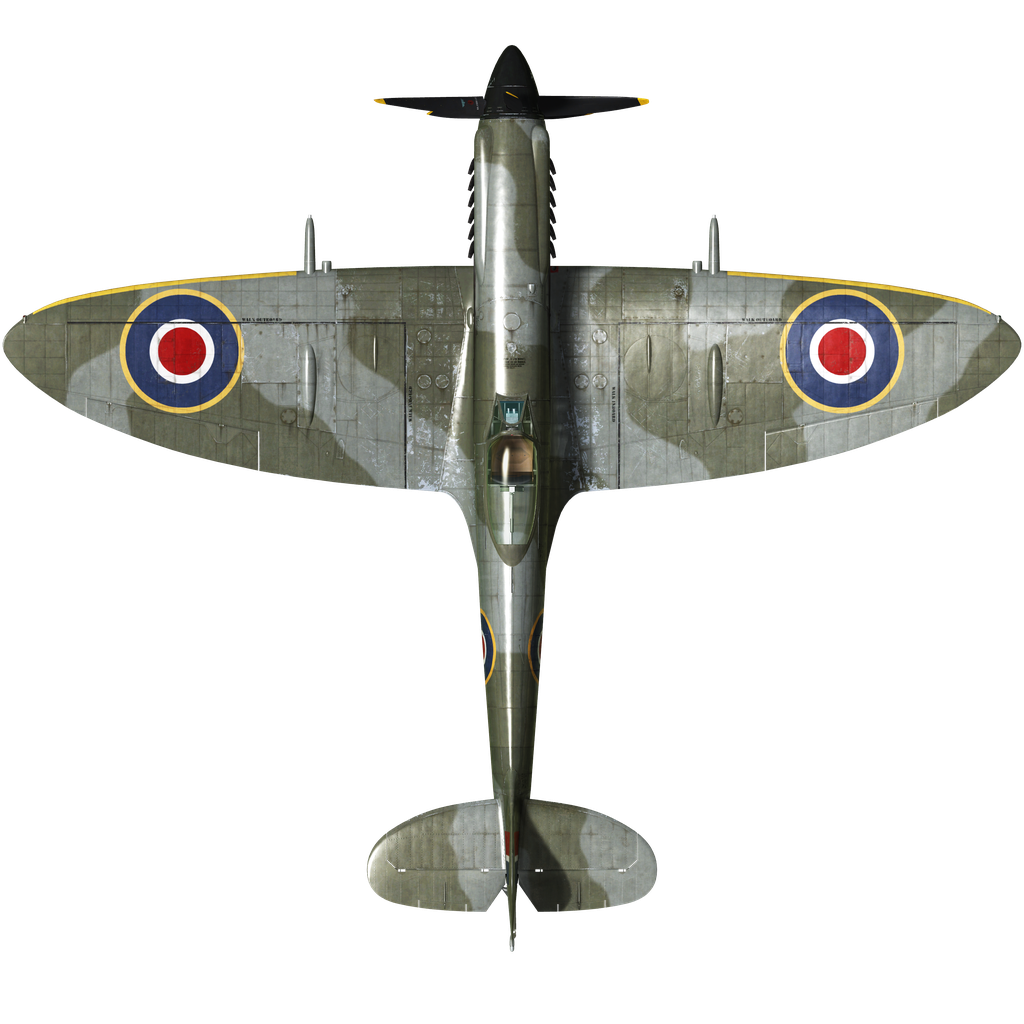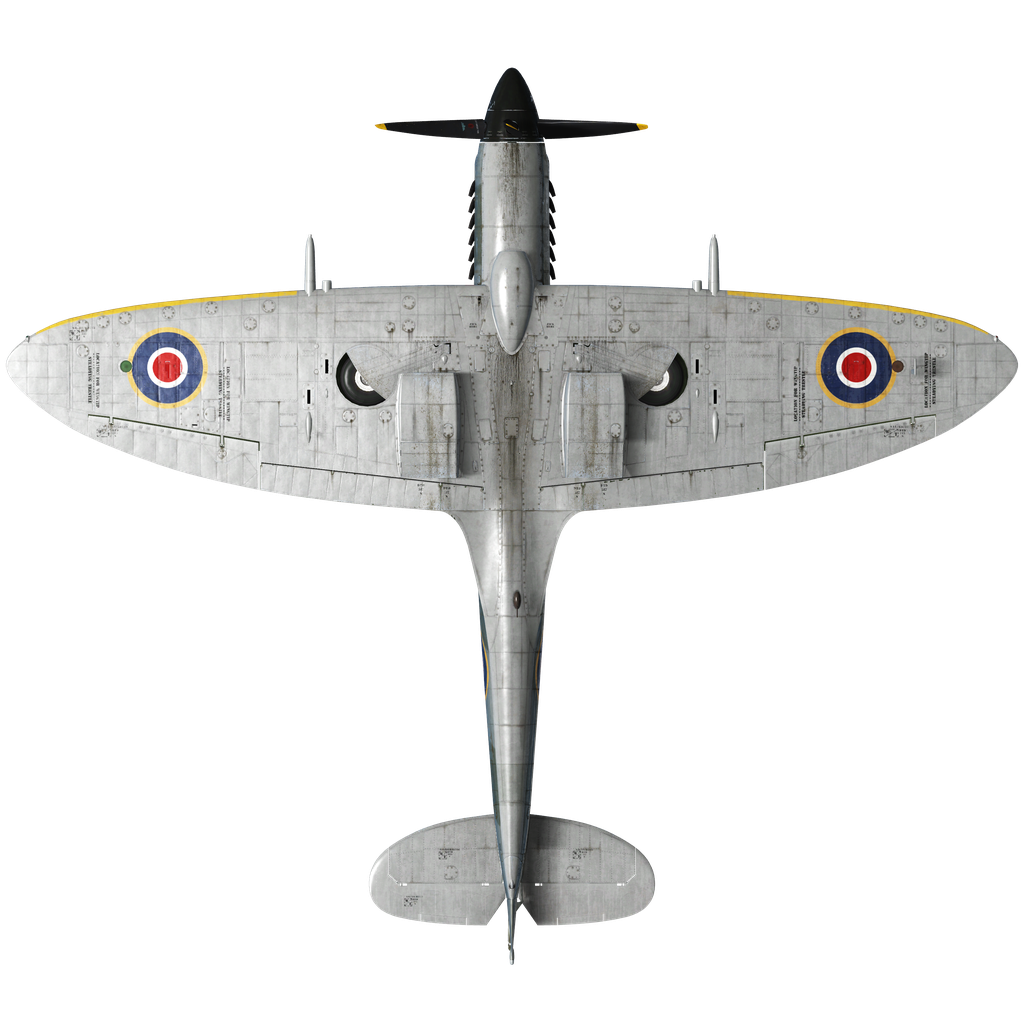Indicated stall speed in flight configuration: 153..173 km/h
Indicated stall speed in takeoff/landing configuration: 145..164 km/h
Dive speed limit: 756 km/h
Maximum load factor: 12.5 G
Stall angle of attack in flight configuration: 19.0 °
Stall angle of attack in landing configuration: 16.3 °
Maximum true air speed at sea level, 2750 RPM, boost +18: 566 km/h
Maximum true air speed at 4000 m, 2750 RPM, boost +18: 661 km/h
Maximum true air speed at 8100 m, 2750 RPM, boost +18: 712 km/h
Service ceiling: 13400 m
Climb rate at sea level: 23.8 m/s
Climb rate at 2650 m: 23.5 m/s
Climb rate at 6750 m: 18.2 m/s
Maximum performance turn at sea level: 18.1 s, at 270 km/h IAS.
Maximum performance turn at 3000 m: 21.0 s, at 260 km/h IAS.
Flight endurance at 3000 m: 1 h 45 m, at 350 km/h IAS.
Takeoff speed: 170..195 km/h
Glideslope speed: 180..210 km/h
Landing speed: 140..160 km/h
Landing angle: 12.5 °
Note 1: the data provided is for international standard atmosphere (ISA).
Note 2: flight performance ranges are given for possible aircraft mass ranges.
Note 3: maximum speeds, climb rates and turn times are given for standard aircraft mass.
Note 4: climb rates and turn times are given for 2750 RPM and boost +18.
Engine:
Model: Griffon 65
Maximum power in Take-off mode (2750 RPM, boost +12, low gear) at sea level: 1565 HP
Maximum power in International power mode (2600 RPM, boost +9, low gear) at 4270 m: 1520 HP
Maximum power in International power mode (2600 RPM, boost +9, high gear) at 8070 m: 1375 HP
Maximum power in Emergency Max All Out mode (2750 RPM, boost +18, low gear) at 2134 m: 2063 HP
Maximum power in Emergency Max All Out mode (2750 RPM, boost +18, high gear) at 6400 m: 1845 HP
Engine modes:
Max Cruising power (unlimited time): 2400 RPM, boost +7
International power (up to 1 hour): 2600 RPM, boost +9
Emergency Max All Out power (up to 5 minutes): 2750 RPM, boost +18
Water rated temperature in engine output: 105..115 °C
Water maximum temperature in engine output: 135 °C
Oil rated temperature in engine intake: 90 °C
Oil maximum temperature in engine intake: 105 °C
Supercharger gear shift altitude: automatic with possibility of manual switch to low gear
Empty weight: 3322 kg
Minimum weight (no ammo, 10% fuel): 3444.2 kg
Standard weight: 3906.9 kg
Fuel load: 363.3 kg / 504.6 l / 111 gallons
Maximum useful load: 1052 kg
Forward-firing armament:
2 x 20mm gun "Hispano Mk.II", 150 rounds per gun, 650 rounds per minute, wing-mounted
2 x 12.7mm machine gun "Browning .50", 250 rounds per gun, 850 rounds per minute, wing-mounted
Bombs:
2 x 250 lb general purpose bomb "250 lb. G.P."
500 lb general purpose bomb "500 lb. G.P."
Length: 9.9 m
Wingspan: 11.21 m
Wing surface: 22.48 m²
Combat debut: March 1945
Operation features:
- The engine is equipped with the automatic governor of the manifold pressure that works when the throttle is set to 1/3 position or above.
- The engine has a two stage mechanical supercharger which does not require manual control. It can be switched to the low gear manually.
- The engine is equipped with an automatic fuel mixture control which maintains optimal mixture.
- The propeller governor has two settings: in aft position it adjusts the propeller pitch automatically to maintain the optimal RPM at the current engine throtle while in forward position it maintains the constant, maximum possible propeller RPM.
- The water and oil radiators shutters are operated automatically, but there is a special manual mode that forces radiator shutters to open completely.
- The aircraft has a neutral static stability. The elevator effectiveness is high, so the aircraft should be controlled carefully, not giving too much flight stick input.
- The aircraft becomes unstable with extended landing flaps.
- The aircraft is equipped with elevator and rudder trimmers.
- Landing flaps have a pneumatic actuator so they can be extended to maximum position only. Speed with extended landing flaps is limited to 160 mph.
- The aircraft tailwheel rotates freely and does not have a lock. Since the landing gear wheels are relatively close to each other, it is necessary to confidently and accurately operate the rudder pedals during the takeoff and landing.
- The aircraft has differential pneumatic wheel brakes with shared control lever. This means that if the brake lever is held and the rudder pedal the opposite wheel brake is gradually released causing the plane to swing to one side or the other.
- The aircraft is equipped with a siren that warns a pilot if the throttle is set to low position with landing gear retracted.
- It is impossible to open or close the canopy at high speed due to strong airflow. The canopy has an emergency release system for bailouts.
- The aircraft is equipped with two underwing formation lights.
- Standard gunsight is adjustable: both the target distance and target base can be set.
- The gyroscopic gunsight automatically calculates required angular deflection while firing at a target. It has 4 modes: fixed reticle, fixed and gyro reticle, gyro reticle, gyro reticle with the target range fixed at 150 yards (night mode). The angular deflection will be calculated correctly only if the target range is set properly. To set the range, adjust the target base first using separate controls and then set the range by adjusting the size of the rangefiding reticle to be the same as the target size.
- Both gunsights have sliding sun-filters.
Basic data and recommended positions of the aircraft controls:
1. Starting the engine:
- recommended position of the mixture control lever: auto mixture control
- recommended position of the oil radiator control handle: auto radiators control
- recommended position of the prop pitch control handle: forward (auto prop pitch control)
- recommended position of the throttle lever: 5%
2. Recommended mixture control lever positions for various flight modes: auto mixture control
3. Recommended positions of the radiators control handle for various flight modes: auto radiators control
4. Approximate fuel consumption at 2000 m altitude:
- Cruise engine mode: 7.4 l/min
- Combat engine mode: 12.9 l/min
